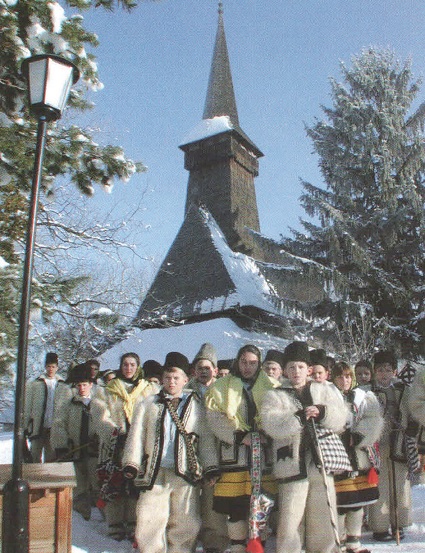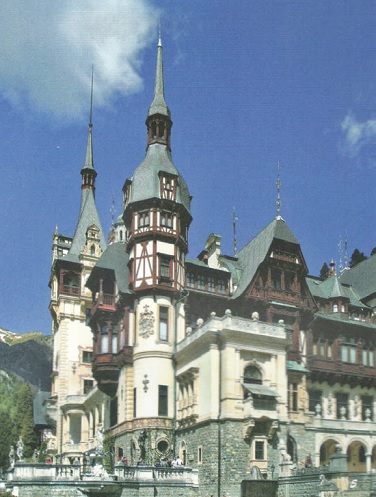羅馬尼亞 新興的熱門旅遊目的地
羅馬尼亞 新興的熱門旅遊目的地
Romania – an emerging tourism destination in Europe

歷史的演進和自然的神奇力量,造就出豐富而獨特的人文及地理特徵,宛如璀璨的明珠散落在地球的每一個角落。位於巴爾幹半島的羅馬尼亞就是造物主的寵兒之一,當你走近她的時候,你會發現她的美直逼你的視線,美得讓你睜不開眼睛。
達契亞這個地方,在古代曾以擁有眾多財富特別是金礦而聞名四方,所以被人稱作是「幸福的達契亞」,而這些財富也引起了當時強大的羅馬帝國的注目。
公元一零五年到一零六年,經過多次苦戰之後,達契亞的最後一位君主終於陣亡,伴着鐵蹄聲聲,羅馬軍團踏進了達契亞,將其拼為羅馬帝國的一個省份,這也為日後羅馬尼亞的誕生奠定了基礎。


羅馬尼亞位於歐洲東南部,曾經是通往土耳其帝國的大道,如今是古典和現代的完美結合。起伏有致的地勢,使其成為歐洲風光最為秀美的國度之一。
「自然風光秀麗,文化韻味濃厚」最能概括羅馬尼亞--這個充滿活力,同時擁有濃郁文化和秀美景色的國度。藍色多瑙河蜿蜒流淌於羅馬尼亞境內,世代哺育着她的子民;雄奇的喀爾巴阡山蘊藏着煤、鐵、黃金等多種豐富礦産,被人們親切地稱之為「綠金」寶庫和「羅馬尼亞的脊樑」;絢麗多姿的黑海既是歐洲著名的旅遊勝地,也造就了羅馬尼亞「黑海明珠」的美譽;數十個民族和多種宗教信仰在這裡得到了和諧的統一。
羅馬尼亞將會給旅遊者留下獨特而難忘的旅遊經歷。在這裡,只要花上幾天時間,您就可以從喀爾巴阡山脈遊歷到黑海,從多瑙河旅行到特蘭西瓦尼亞北部的中世紀古鎮。當您步入修建在西吉什瓦拉的中世紀古鎮,或馬拉穆列什的傳統村莊中頗富盛名的外牆聖像壁畫修道院時,您會感覺到時光在倒流。

-----------------------------------------------------------------

Romania’s natural features are unique in Europe. This country enjoys the embrace of the Carpathians with its area of true wilderness, and the ever-fresh beauty of the Danube Delta, as well as extensive plains scattered with little natural and cultural treasures. People enrich this natural treasure with unchanged traditions and a warm and generous personality. Their cultural sites, many INESCO World Heritage Sites, are testament to a unique history with a heritage of Latin origin mixed with other great cultures of the continent. The stones of these places will surely fascinate you, and the deep spiritualty of Romanians will impress you too.


| Romania - general data | |
| Nation: | Romania |
| Capital city: | Bucharest |
| Geographic position: | in the south-east of Central Europe. |
| Neighbours: | Ukraine (N), the Republic of Moldova, Ukraine, and the Black Sea (E), Bulgaria (S), Serbia (SW), and Hungary (W). |
| Population: | ca. 21,700,000. Outside the country's borders there are large Romanian communities. |
| Official language: | Romanian (a neo-Latin language of the Romance languages family) |
| Ethnic structure: | Romanians – 89.5%; Hungarians (including Szecklers) – 6.5%; other ethnic groups – 4% |
| Religion: | Eastern Orthodox - 86.7%; Roman-Catholic - 4.7%; Protestant - 3.2%, etc. |
| Administrative organization: | 41 counties, plus Bucharest, the capital city (population ca. 2,200,000). There are 263 cities and towns, of which 80 municipalities, and 2 685 communes with over 13 285 villages. |
| Climate: | temperate-continental, four seasons |
| Features: | mountains (31% of area), hills and plateaus (33%), plains (36%), Danube Delta |
| The Romanian State: | Romania is a sovereign and independent, unitary and indivisible nation state; |
| Form of government: | republic; |
| The Legislative: | The Parliament of Romania (4-year term) has two houses: the Senate and the Chamber of Deputies. |
| The Executive: | The Government of Romania, headed by the Prime Minister, entrusted by the President of Romania with forming the Cabinet and with the Governance Program endorsed by Parliament by a vote of confidence. |
| The Judiciary: | independence guaranteed by the Superior Council of the Magistracy; judges are irremovable. |
Romania is a member of the UN (1955), of NATO (2004) and of the European Union (2007).













